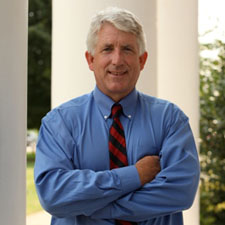
“In 2014, it is beyond good-faith debate that climate change is being caused by greenhouse gas pollution, with CO2 acting as a primary pollutant. While estimated implementation costs for the proposed Rule to electricity ratepayers have varied widely among stakeholders, a slow or inadequate response to climate change would also produce significant costs and negative impacts on Virginia consumers,” said Attorney General Herring. “Any review of the costs of implementation must be balanced with the benefits to our health, environment, and economy. If Virginians see lower electric bills but higher medical bills or more days of lost work because of air pollution and catastrophic weather, honest accounting must acknowledge the trade-off. The same can be said of farmers struggling through drought or military installations and coastal residents who are staring down the realities of sea level rise. At this stage, this proposed Rule calls for a cooperative, rather than litigious approach. Our comments outline a responsible approach for evaluation, recommend changes that would improve Virginia’s ability to implement a carbon reduction plan, and raise some legal questions that EPA should address in developing a final Rule.”
Herring’s comments on the proposed Rule outline substantive policy changes that will benefit Virginia consumers by giving the state more flexibility to pursue its carbon reduction goals and more equitable treatment to certain carbon reduction strategies:
- Virginia should receive more credit for recent investments that ratepayers have made in zero-carbon nuclear generation. The significant disparity between the credit given to nuclear and the credit given to solar and wind generation, both zero-carbon generation, should be addressed.
- The final Rule should make it clear that Virginia and other states can modify their initial compliance plan, without altering their commitment to their carbon reduction goal, if adjustments are needed to maintain grid reliability or respond to changes in energy market conditions.
- The final Rule should not limit Virginia’s ability to receive credit for in-state energy efficiency savings. The proposed Rule appears to give Virginia credit for only 58% of MegaWatt hours avoided through energy efficiency programs, whereas new renewable generation would receive a 100% credit.
- The final Rule should promote regional cooperation and help prevent unintended consequences that might incentivize states to shut down facilities that serve customers in neighboring states.
The comments also outline several legal questions that should be addressed by the EPA to ensure the final Rule is firmly grounded in the law and within the EPA’s legal authority:
- Because the Rule establishes different emissions goals for individual states, rather than uniform national standards, the EPA should ensure the final Rule is well within the powers afforded the EPA by the Clean Air Act and the reasonable deference the federal courts would grant the agency to interpret the Act.
- The EPA should thoroughly analyze the interaction of provisions within the Clean Air Act to ensure there is solid authority to implement regulations on existing facilities that are more stringent than regulations on new sources.
- The EPA should closely examine its authority to regulate emissions beyond power generation facilities, as that approach is new and, thus far, untested in a court of law.
The Attorney General’s comments were developed after months of evaluation and meetings with a wide variety of stakeholders including utility and other business leaders and consumer, health, and environmental advocates.










